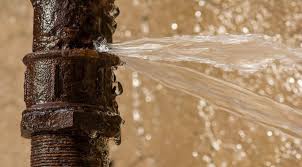A small water leak might seem like a minor issue, but if left unchecked, it can lead to significant damage and costly repairs. Whether it’s a dripping faucet, a hidden pipe leak, or a faulty appliance, addressing the problem early can save you time, money, and stress. In this article, we’ll explore how to identify, locate, and fix a small water leak in your home.First, let’s discuss the signs of a small water leak. Common indicators include:
- Unexplained increases in your water bill
- Damp or discolored spots on walls, ceilings, or floors
- A musty odor in certain areas of your home
- The sound of running water when no fixtures are in use
- Low water pressure in your faucets or shower
If you notice any of these signs, it’s time to investigate further. Start by checking the most common sources of small water leaks:
- Faucets and Showerheads: A dripping faucet is one of the most obvious leaks. Over time, worn-out washers or seals can cause small but persistent leaks.
- Toilets: A running toilet can waste hundreds of gallons of water. To test for a leak, add a few drops of food coloring to the tank and wait 15 minutes. If the color appears in the bowl, you have a leak.
- Under Sinks: Check the pipes and connections under your sinks for moisture or corrosion.
- Water Heater: Inspect the base of your water heater for pooling water or rust.
- Appliances: Dishwashers, washing machines, and refrigerators with water dispensers can develop leaks over time.
Once you’ve identified the source of the leak, it’s time to take action. Here are some steps to fix a small water leak:
- Tighten Connections: Sometimes, a loose connection is the culprit. Use a wrench to gently tighten any loose fittings.
- Replace Washers or Seals: For dripping faucets, replacing the washer or seal can often solve the problem.
- Use Pipe Tape: If the leak is coming from a threaded pipe joint, applying pipe tape (also known as Teflon tape) can create a watertight seal.
- Patch Small Holes: For tiny holes in pipes, epoxy putty or a pipe clamp can provide a temporary fix until you can replace the pipe.
- Call a Professional: If the leak is in a hard-to-reach area or you’re unsure how to fix it, don’t hesitate to call a plumber.
Preventing future leaks is just as important as fixing current ones. Here are some tips to keep your plumbing in good condition:
- Regular Inspections: Periodically check your plumbing fixtures and appliances for signs of wear or leaks.
- Monitor Water Pressure: High water pressure can strain your pipes and increase the risk of leaks. Consider installing a pressure regulator if your home’s water pressure is consistently above 60 psi.
- Insulate Pipes: In colder climates, insulating your pipes can prevent them from freezing and bursting.
- Replace Old Plumbing: If your home has outdated plumbing, consider upgrading to more durable materials like copper or PEX.
- Be Mindful of What You Flush: Avoid flushing anything other than toilet paper to prevent clogs and leaks.
Ignoring a small water leak can have serious consequences. Over time, even a minor leak can lead to:
- Mold and mildew growth, which can affect your health
- Structural damage to your home’s foundation, walls, or floors
- Higher utility bills due to wasted water
- Pest infestations, as insects and rodents are attracted to moisture
In conclusion, a small water leak is more than just an annoyance—it’s a problem that requires prompt attention. By knowing the signs, checking common sources, and taking action to fix leaks early, you can protect your home from costly damage. Remember, when in doubt, consult a professional plumber to ensure the job is done right.

